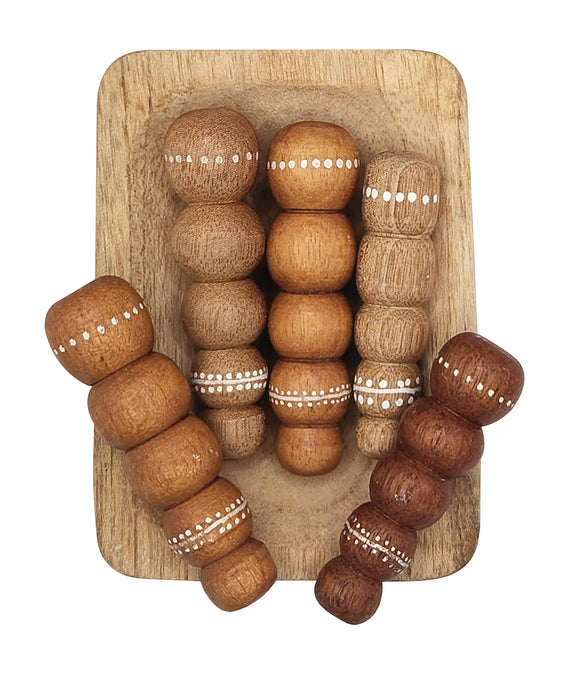
Bardi Grubs Hand Carved with Coolamon
Culture and authenticity in the classroom! These Indigenous resources have been hand painted by Noongar artists in Western Australia.
Did you know Bardi Grubs (Witchetty Grubs) are the larva of a moth? They can be found in the root system of the Witchetty Bush, in the stems of Wilyawa 'Red-Eyed Wattle' and in the trunks of dying Balga 'Grass Tree'. Bardi is the Noongar name for Witchetty Grub.
High in protein they taste a lot like scrambled eggs! Eating 10 Bardi would be enough protein to feed an adult for a full day! Depending on your taste buds - Bardi can taste a bit like almonds, peanuts or scrambled eggs! When cooked the Bardi skin is sort of like biting into chicken-skin.
A guiding principle of the National Quality Framework (NQF) is that Australia's Aboriginal and Torres Strait Islander cultures are valued. Incorporating bush tucker into your home corner resources or role play areas create opportunities to embed culture into curriculum. We love using these hand carved grubs to go on a “Bardi” hunt by hiding them in the base of plants to collect. Find and collect all the hidden Bardi with coolamon. Count how many Bardi you have practice counting with Noongar Numbers.
Noongar Numbers:
1 Keny/Keyen/Nendji
2 Koodjal
3 Dambart/Mo
4 Koodjal - Koodjal
5 Maar
6 Maar-Keny/Keyen/Nendji
7 Maar-Koodjal
8 Maar-Dambart/Mo,
9 Maar-Koodjal-Koodjal,
10 Maar-Maar.
Noongar is traditionally an oral language with regional dialects; words and spelling in written form can vary.
Includes:
3 x Bardi Grubs 7cm L
2 x Bardi Grubs 6cm L
1 x Coolamon measuring 10.5 cm L x 9cm W.
Use as a teaching tool extension to butterfly life cycles by exploring the life cycle of a Bardi Grub. Made from wood. Ages 3yrs+



